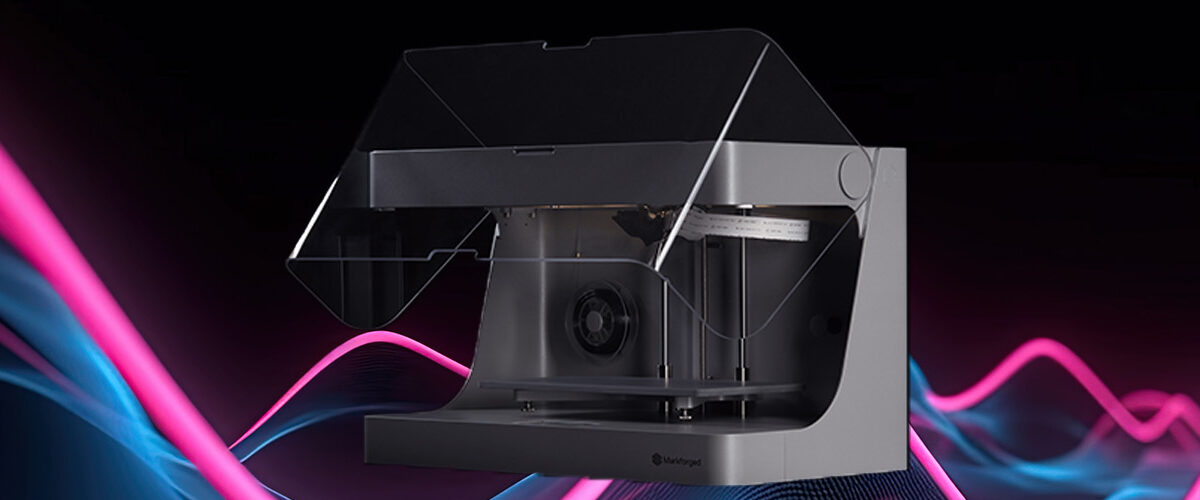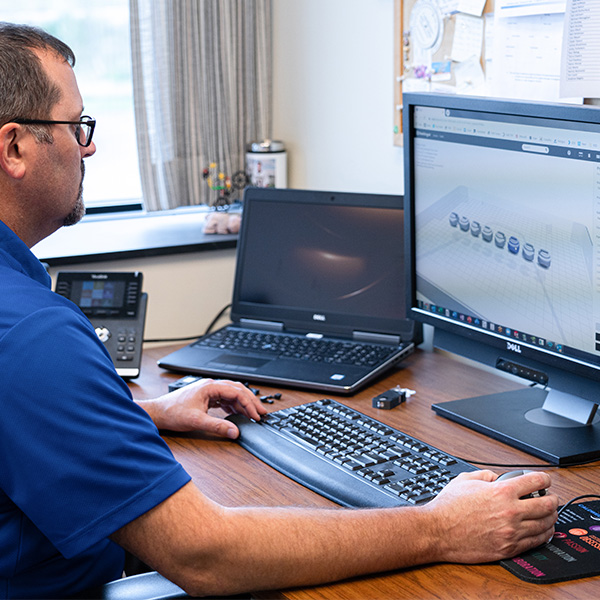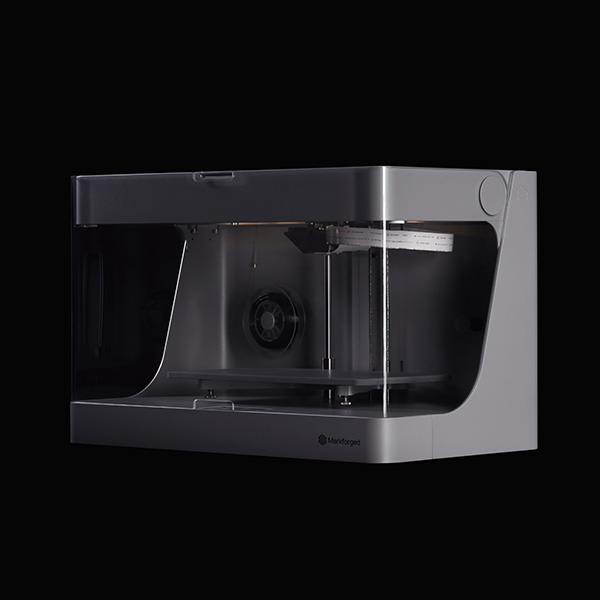
A Look at the Markforged Mark Two (Gen 2) 3D Printer
Blog Article | August 24, 2023
Markforged introduced the Continuous Fiber Fabrication (CFF) process in 2014 with the Mark One 3-D printer. It featured a dual extruder system combining CFF with traditional 3-D printing. Designers could use fiberglass, carbon fiber or Kevlar for the CFF process, and nylon for 3-D printing.
The Mark Two Enterprise came on the scene in 2016, with a redesigned composite printing system that created stronger, higher-quality parts. It’s 40 percent faster than the Mark One, on average, and can reinforce much smaller parts.
Now Markforged has introduced the Mark Two (Gen 2). Let’s look at how this model improves on previous versions.
Markforged 3D Printers & 3D Printing Capabilities
Markforged changes what you know about a 3D printer and metal printing. Markforged 3D printers transcend the realm of 3D printer prototyping and trinkets. Find the right Markforged 3D printing solution for your needs!
Materials and System Details
The Mark Two is a precision-designed desktop printer suitable for a range of manufacturing and engineering applications. With an intuitive touchscreen interface, it’s easy to set up, operate and maintain. The print bed clicks in place with 10 µm accuracy, enabling designers to pause a print job, add components, and continue printing.
Security features include administrator access, two-factor authentication, and single sign-on.
Materials and Properties
In addition to fiberglass, carbon fiber and Kevlar, designers can choose high-strength, high-temperature (HSHT) fiberglass. HSHT fiberglass isn’t as stiff as carbon fiber but works well for parts used in high-temperature environments.
Thermoplastic material options include the Markforged Onyx filament, a nylon combined with chopped carbon fiber. Onyx is 40 percent stronger than ABS, has an excellent surface finish, and is chemical and heat resistant. The new Markforged Precise PLA is cost-effective thermoplastic for design validation. It comes in a variety of colors and prints without warping. Designers can also use the new Markforged Smooth TPU 95A, a rubber-like material that’s ideal for seals, gaskets, straps, belts and more.
Specifications
The Mark Two delivers best-in-class reliability with an aluminum chassis and precision-machined components. It measures just 584mm x 330mm x 355mm (23” x 13” x 14”) but provides a generous build volume of 320mm x 132mm x 154mm (12.6” x 5.2” x 6”). It has a kinematic coupling print bed that’s flat to within 160µm and Z-layer resolution of 100µm to 200µm.
Included with the printer: a dry box and accessories kit (bed-leveling shims, scraper, spare parts, and tools).

Software
The Mark Two uses the Markforged Eiger cloud-connected software for slicing parts and managing workflows. Eiger’s intuitive interface makes it easy to use the CFF process to print parts based on CAD designs. The Eiger internal view enables designers to customize fiber routing to maximize the performance of the part.
Designers simply upload their 3-D designs into the Eiger software, select the continuous fibers and base materials, and use the one-click automated print prep option. They can also customize the settings by changing wall thickness, infill densities, layer heights, supports, etc. Eiger also features digital parts inventory and dashboard analytics for tracking print jobs and material usage.
Technology
Thermoplastics are commonly used in 3-D printing — the printer melts and extrudes them layer by layer to form the part. However, thermoplastics lack the strength, stiffness and heat resistance needed for engineering applications. Composite fibers are stronger, stiffer and more heat resistant than thermoplastics, but are used to reinforce other materials. By themselves, composite fibers can easily break if bent. CFF combines the two materials to create parts with strength comparable to aluminum.
The Mark Two features two nozzles. One nozzle forms the walls and closed-cell infill of the part using thermoplastic material. The second nozzle routes continuous fiber in the plastic according to the designer’s specifications. By heating and compressing the materials during extrusion, the Mark Two bonds the continuous fiber. Its heat deflection temperature of up to 140 degrees makes it possible to reinforce parts with high-temperature composite materials.
Use Cases
The Mark Two is suitable for a wide range of use cases, including initial and functional prototyping and high-quality custom tooling. It accelerates and reduces the cost of prototyping and iterating, and enables companies to quickly print replacement parts onsite.
The CFF process can also be used for soft jaws and welding fixtures. Metal parts can be replaced with 3-D-printed carbon-fiber-reinforced parts, also at significant time and cost savings. The parts are durable enough to handle corrosive fluids, clamping forces and high temperatures.
Why Saratech Recommends the Markforged Mark Two
The Markforged Mark Two makes it fast and easy to incorporate CFF into the additive manufacturing process. Designers can take advantage of various composite fibers and thermoplastic materials, including the Markforged Onyx micro-carbon-fiber-filled nylon product. With a simple interface and powerful software, the Mark Two is a complete solution for serious manufacturing and engineering use cases.


